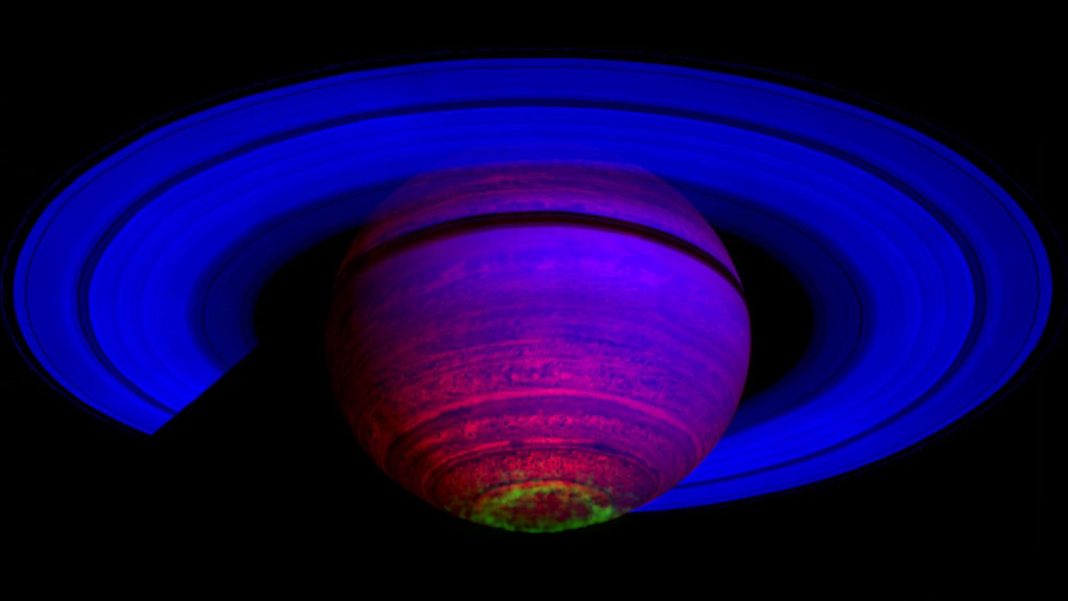Saturn’s large planetary auroras appear to have one more factor responsible for causing it, in addition to the action of the planet’s magnetosphere. According to a new study by researchers at the University of Leicester, the winds blowing inside the gas giant’s atmosphere would also be part of that equation. If confirmed, the discovery will represent a new understanding of planetary auroras.
All the planets where auroras have been observed have shown something in common: they came from currents flowing into the planet’s atmosphere from the magnetosphere, driven by interaction with charged particles from the Sun (such as Earth’s auroras) or material. volcanic, expelled by moons orbiting the world in question (which occurs on Jupiter and Saturn).
So, in addition to the discovery being of great importance for the understanding of auroras, on other worlds it also helps to answer a question raised during the Cassini mission. When it arrived at Saturn, the spacecraft collected measurements of the planet’s rotation rate through pulses of radio emissions in the Saturnian atmosphere, as a way of determining the length of days there.
Want to stay on top of the best tech news of the day? Access and subscribe to our new youtube channel, Kenyannews News. Every day a summary of the main news from the tech world for you!
Surprisingly, scientists have found that this rate appears to have changed over the past two decades since the Voyager 2 spacecraft passed Saturn in the 1980s. Nahid Chowdhury, corresponding author of the study, notes that the planet’s internal rotation rate must be constant, but studies have shown for decades that various properties tend to change over time.
However, current understanding of the physics of the interior of planets shows that the rate of rotation cannot change that quickly, so there must be something else going on on Saturn. “This study represents the first detection of the fundamental cause, positioned in the planet’s upper atmosphere, which generates both observed periodicities and aurorae,” he said.
Saturn’s Auroras
In the new study, astronomers and scientists from several institutions tried to answer this question by collecting measurements of infrared light emissions from the planet’s upper atmosphere with the Keck Observatory. Afterwards, the authors mapped flux variations in the ionosphere, below the magnetosphere, for a month. The map produced was placed superimposed on the planet’s radio aurora pulse.
The comparison showed a significant proportion of them are generated by the weather patterns of Saturn’s atmosphere, and are responsible for variations in the planet’s rotation rate. The authors believe that the system feeds on energy from Saturn’s thermosphere, with winds blowing into the ionosphere at 0.3 to 3 km/s. “Recently, many researchers have focused on the possibility that Saturn’s upper atmosphere causes this variability,” explained Tom Stallard, a professor at the university.
According to him, the search for a new type of aurora refers to some of the first theories about those that occur on Earth. “I love knowing what the name ‘aurora borealis’ comes from ‘the aurora of the north wind,’” he commented. “These observations revealed that Saturn has a true aurora borealis, the first caused by winds in the planet’s atmosphere,” he concluded.
Kevin Baines, co-author of the study and a member of the science team on the Cassini mission, believes that “by conclusively determining the origin of the mysterious variability in radio pulses, it also eliminates much of the confusion in the rate of rotation and the length of days.” on Saturn”.
Mission scientists developed a new method based on perturbations in the planet’s rings, and concluded in 2019 that Saturn’s rotation period is 10 hours, 33 minutes, and 38 seconds. The article with the results of the study was published in the journal Geophysical Research Letters.
